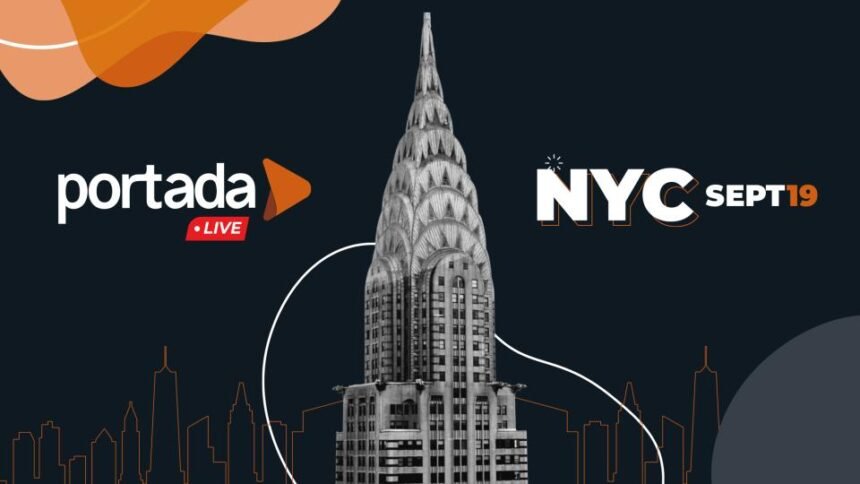Mike Schretter for Portada
In a panel on how sports are changing the U.S. sports marketing landscape during Portada Live in NYC last week, Gustavo Cecilio, Head of Marketing – Multicultural BusinessUnit, PepsiCo Foods, and Kaio Philipe, CMO, Inter&Co, discussed the importance of soccer promotins, their brands’ creative marketing strategies, and the power of connecting with Hispanic Americans and Gen Z audiences. The event brought together top brand marketers in the multicultural space. Kevin Downey, Senior Sales Director at Digo Hispanic Media, moderated the conversation, highlighting their unique approaches.
The Speakers
Reaching Hispanic Audiences through Soccer: Inter & Co’s Approach

Philipe emphasized the growing influence of sports, mainly soccer, in engaging Hispanic-American audiences. At the event, Philipe, who received the Portada Experiential Marketing Award, shared insights on Inter&Co’s partnership with Orlando City FC and Orlando Pride for stadium naming rights. According to Philipe, Inter & Co’s Orlando City FC and Orlando Pride stadium naming rights announcement helped get the brand into major media outlets like Bloomberg and Forbes.
According to Philipe, sports are an effective marketing platform because they unite people from diverse backgrounds. He explained that for Inter&Co, targeting Hispanic audiences is imperative while promoting Inter&CO’s brand as a financial service company. The goal is to make their brand and marketing campaigns relevant to multicultural Hispanic audiences in the U.S. and the broader Hispanic community. Philipe also noted the importance of avoiding media clichés while respecting the diversity within Spanish-speaking countries. As Philipe put it, “We are working with companies to expand into Hispanic American (markets).”
Soccer Promotions: How PepsiCo’s Leverages Soccer to Engage Consumers
PepsicCo Foods’ Marketing Head for the Multicultural Business Unit Gustavo Cecilio, on the other hand, shared PepsiCo’s strategy for attracting Hispanic audiences through creative soccer-based campaigns. One example of how a major brand believes in soccer content to reach consumers at scale is the collaboration between Lionel Messi and PepsiCo Food brand Lay’s, using the phrase “OLAYS” (see video below) to play off the familiar soccer chants; Cecilio mentioned that “70% of the multicultural audience wants to see brands that appreciate their culture.” Messi’s global brand appeal made him a natural fit for engaging Hispanic consumers with PepsiCo.
Another campaign Cecilio highlighted was with Sofia Huerta, a U.S. National Team player who also played for the Mexico women’s team in the past. Huerta collaborated with Marias Gamesa Cookies. The campaign focused on Sofia’s Mexican heritage and origin story, which resonated with Mexican American audiences. Gustavo reinforced that “sports are a big deal” for PepsiCo, and soccer has effectively connected their brand with these communities. Both marketers, Philipe and Cecilio, also addressed the importance of engaging Gen Z, a demographic for whom soccer holds high engagement. Cecilio emphasized that soccer promotions have the unique ability to capture the attention of Gen Z, and they have been successfully aggressive in using soccer to reach this age group in their marketing campaigns. Kaio added that engaging Gen Z stems from communication and proper messaging. A good strategy involves creating clear, targeted messaging that speaks to the specific needs of this generation. By tailoring campaigns to increase Gen Z exposure, both marketers aim to resonate with younger audiences by building brand loyalty through soccer.
What We Learned
“The Messi-branded snack sold three times as much as the same snack flavor without the Messi endorsement.” (Gustavo Cecilio)
“Partnerships like our one with Messi can achieve a positive ROI in the long term. For that, the company’s brands need to have substantial scale.” (Gustavo Cecilio)
“It is important to have our content out there to educate audiences through targeted media channels for Hispanics.” (Kaio Philipe)











